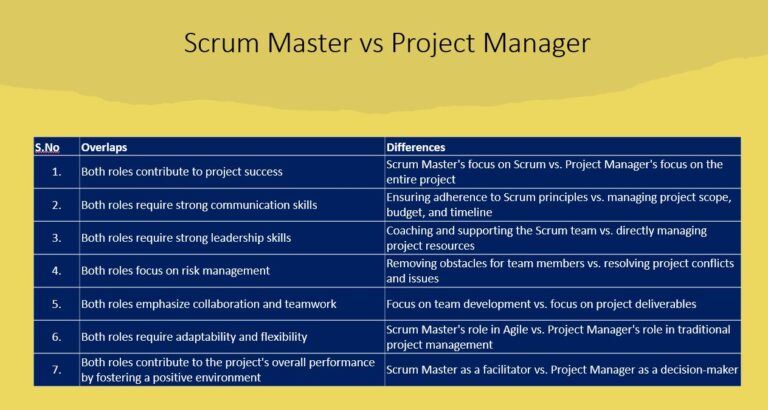Testing In Agile: Top 7 Challenges (& How To Fix Them)

Agile methodologies have slowly taken over the software development world, with the focus on iterative and incremental delivery. In the world of waterfall development, serious testing was typically left until the end of the project. But in agile models, testing is integrated throughout each sprint.
While that should help improve the overall quality of the product, testing in agile can still present some challenges.
Of course, the problem manifests itself differently for every team. In this post, we’ll explore some of the top challenges agile teams face with testing, and offer strategies for addressing them.
NOTE: Some Agile pundits argue that there is no such concept called as ‘Agile Testing Methodology’ or ‘Agile Testing’. I’d normally agree, except that I have never seen it work in a large scale set up. The lack of testing focus & process is one of the reasons most products turn out sub-standard after a lot of investment.
We’ll use ‘agile testing’ synonymously with ‘testing in agile’ or similar terms. I hope you aren’t offended.
1. Not Defining A Clear Agile Testing Methodology
It is important for testing teams in an Agile set up to have a defined agile testing life cycle that they can follow and ensure consistency. This can be modeled on traditional testing methodologies like ISTQB or even something like BDD/TDD.
The Software you build & your customers doesn’t care about what methodology you use. All your customer care about is if it meets their needs & is of high quality. Defining a testing methodology helps the entire team understand HOW the quality is assured before it is delivered.

Some practical tips while you define Testing in Agile methodology / Agile testing strategies for product
Ask these questions and assess what agile testing strategy best fits your team
- Who will do the unit test? Hopefully the developers do, but make sure someone does the unit testing and it is a pre-requisite to add their code into a shared environment
- Who will test the features – do you agree to cover it only with test automation, or will also execute some manual testing on top of it?
- Will you get some real customers/business users preform user acceptance testing, or will your Product Owner cover the acceptance tests?
- Will you ask for some exploratory testing prior to major releases?
- Who will do the performance testing (& other non functional tests) – your team or a separate system team within the Scaled Agile framework?
2- Lack Of Quality in the Backlog Refinement Process (in Agile Software Development methodologies)

1. Lack of Testable User Stories
A key challenge with Agile testing is the lack of testable user stories. User stories are brief descriptions of features that need to be implemented. In order to be testable, user stories must be well-written and clear.
Often, user stories are poorly written and do not provide enough detail for testers to understand what needs to be tested.
For example, the use cases aren’t clearly defined. And many times the non-functional requirements are completely forgotten.
2. Lack of Clear Acceptance Criteria
Acceptance criteria are criteria that must be met in order for a user story to be considered complete. Without acceptance criteria, it can be difficult for testers to understand what needs to be tested and how to verify that the feature works as expected. Acceptance criteria should be clear, concise, and testable.
Agile testing (or any testing for that matter) isn’t effective when the business needs are not clear.

3. Lack of Definition of Done
The definition of done is a set of criteria that must be met before a user story can be considered complete. Without a definition of done, it can be difficult for testers to understand when they should stop testing and when they should sign off on the user story.
The definition of done should be clear, concise, and agreed upon by all stakeholders.
3. Lack Of Adequate Automated Tests
As anyone who has worked in Agile will tell you, one of the biggest challenges is the lack of adequate automation. Automation is critical in Agile because it allows for rapid feedback and shorter development cycles. Without automation, it can be very difficult to keep up with the pace of change in Agile. Additionally, manual testing is often error-prone and can lead to delays in delivery.

However, test automation can be challenging in a rapidly changing application landscape. In a normal scrum team, there’s usually one automation specialist at best, and usually cannot cope with testing all components of the application.
If you team delivers XYZ number of user stories per sprint, there should be a clear assessment of if each of the stories deserve to be automated. This can be done by analyzing the technical difficulty, the user impact and business value of the story.
Automate stories that have high technical difficulty, high user impact, and high business value. This will prioritize the most important stories for automation while still allowing testing to keep up with changes.
In some sprints, it might be all the XYZ user stories, and in some none.
But as long the team collectively agrees on this strategy, they can have a well balanced approach towards testing automation.
Tips for Overcoming the Challenges of Test Automation
Despite the challenges associated with test automation, there are several things you can do to overcome them. First, consider using a tool like Jenkins or Bamboo to help set up and manage your automated testing environment.
These tools can help you automate many of the tasks associated with setting up and maintaining an automated testing environment. Additionally, they provide a way to run your tests automatically on a regular basis (e.g., nightly) so that you don’t have to remember to run them manually every time there is a change to your codebase.
Second, use a tool like Selenium or Appium to automate your UI tests. These tools will allow you to write automated tests for your web or mobile application that simulate user interaction with your application. This type of automated testing is especially valuable because it can catch UI bugs that might otherwise be missed by manual testing.
Finally, make sure to use a reliable source control system (e.g., Git) to manage your codebase and ensure that all changes are properly tracked and tested before being merged into the main codebase. This will help prevent bugs from being released into production due to incorrect merging of code changes from different branches.
4. Lack Of Continuous Integration, Continuous Deployment & Continuous Testing
Another key challenge is the lack of continuous integration & deployment (CICD). CICD is a process in which code changes are automatically built, deployed and tested on a regular basis. This helps to ensure that errors are caught early and that code changes do not break the build.

Moreover, testing teams are always under pressure to release quickly, leading them to skip testing steps in order to keep up with the sprint timeline. This is where the CICD can be a true friend to testers, helping them catch code blunders early on allow them to focus on more intricate testing.
However, investing in a CICD tool like Jenkins, Bamboo etc. can be expensive and many organizations do not seem to invest on them with enthusiasm.
Tips for Overcoming Investment challenges:
Start using the business language to explain the benefits of the investing on such tools. No one cares about how cool these tools are, especially your sponsors and stakeholders.
Use words like
- Shorter time to get a product into a pilot: Concept to pilot in XX days/weeks
- Better customer experience: Higher quality as we catch errors earlier
4. Lack Of True Acceptance Test Driven Development
Another challenge with Agile testing is the lack of test-driven development (TDD). TDD is a process in which tests are written before code is developed. This allows for early detection of errors and helps to ensure that code meets the requirements (by testing the features as they are built). TDD can be difficult to implement in Agile due to the short development cycles.

One solution is to have a testing specialist on the team who can focus on writing acceptance tests for user stories. This testing specialist can also serve as a mentor for the rest of the team, teaching them about TDD and testing best practices.
Additionally, it’s important to have acceptance testing as a priority in sprint planning. The testing specialist can work with the Product Owner to prioritize stories that require acceptance testing, and make sure they are given enough time during the sprint for testing.
Teams can also use Behavior Driven Development (BDD) as long as there is a collective emphasis towards quality.
5. Lack Of Collaboration Between Scrum & System teams
In many large scaled organizations, testing is often divided between scrum teams and system teams. Some of the most common system teams are E2E/UAT, Performance testing (& other non functional testing), Test Data etc.,

This can lead to a lack of adequate collaboration and incoherent agile testing methods between the multiple testing groups, resulting in gaps in testing coverage and missed bugs.
One solution is for testing to be included as part of all Program increment/sprint planning meetings. This allows for testing from both scrum (development team) and system teams (testing teams) to collaborate on testing coverage and ensure that testing efforts are aligned.
Additionally, having a testing specialist on each scrum team can help bridge the gap between testing in the scrum team and testing in system teams. This testing specialist can serve as the point person for collaborating with system teams and ensuring that testing efforts are coordinated effectively.
Overall, it’s important for testing to be considered a cross-functional effort, rather than siloed within individual teams. Success is when everyone involved in the software development life cycle understand the testing process the same way.

6. Myths about Agile Testing
Agile testing methodologies are supposed to be product development’s friend, but in many cases agile testing isn’t clearly understood and looked at as an impediment.
Myth 1: Agile testing means lack of E2E/UAT
This is not true. The development team can choose to do E2E/UAT testing at different phases in the agile software development process. Some teams outsource this to a System team (in large Scaled Agile models), and in some cases the scrum teams do it with the users directly.

Agile testing methods do not exclude the classic testing process like exploratory testing, regression testing, etc. It is still a good idea to include beta testing, exploratory testing, a formal UAT etc., at different times in the product development lifecycle based on your organization’s needs.
Myth 2: Agile testing is all about automation
Again, this is not true. While automated testing is a key part of agile testing, functional/manual testing is also essential. Teams should encourage BAs, Product Owners to run exploratory/usability testing to get a feeling of human experience using the software.
Myth 3: Agile testing means less documentation
This is also not true. Agile testing does involve less documentation than traditional waterfall testing, but it does not mean no documentation. Rather, agile testing focuses on documenting just enough to help the team work effectively.

Myth 4: More Agile Testing means more time
This is not always the case. Testing is almost never 100%, it is always a balance based on the risk and business value. A well thought out Agile testing strategy allows for testing to be prioritized and focused on the most important areas throughout the software development life cycle. Many teams that do not focus on quality spend far more time and money dealing with production issues and cost the organization a lot more damage.
Myth 5: Agile testing does not promote continuous testing
No, it is the opposite. A well defined agile testing process ensure continuous testing throughout the agile development life cycle. Any organization that is mature should include quality at all stages of the agile software development cycle – right from the definition of ready to definition of done!
Myth 6: Agile testing needs more testing tools (& costs more money)
Again, this is not true. The tools required for automation testing isn’t significantly different and is usually on par regardless of what methodology the organization chooses for its software development process.
Conclusion
Trying to fit multiple layers of testing into an agile environment can be a challenge, as it often seems like an unnecessary extra step in the development process. However, if you can push back on this idea and educate stakeholders on the cost of not testing, you may find that testing is more successful in agile environments.
It’s important to emphasize the cost of not testing, which can include lost revenue due to bugs or customer dissatisfaction. Investing in testing early on can actually save money. By regularly assessing the value of testing and communicating this to stakeholders, testing can become a valued and integral part of the agile development process.
Will also be published at Author’s Medium site
More about Software Engineering topics here





